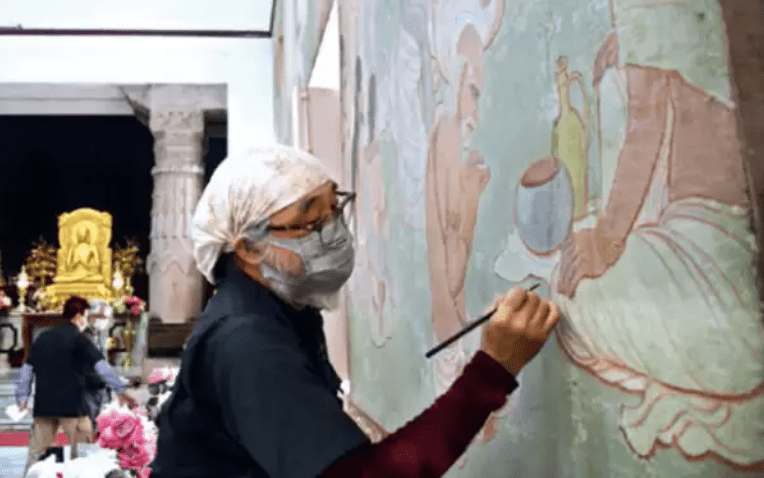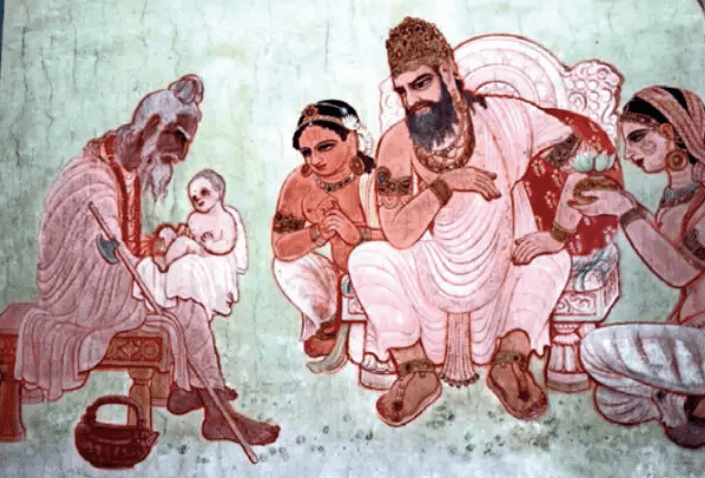Team of Japanese master artists recreates fading Buddhist murals in Sarnath

A team of artists repaints the majestic Mulagandha Kuti Vihara murals, a century after legendary Japanese artist Kosetu Nosu had been delegated the task to resurrect them, he visited Ajanta cave shrines in 1917 to study Buddhist art with an idea to replicate them in his native land.
As a Buddhist with intimate connection with Indian arts, Kosetu Nosu visited Mukul Dey, the then head of the Government School of Art in Calcutta in November 1932. The same year, he was selected to make a mural painting on the life of Lord Buddha at the Mulagandha Kuti Vihara Temple in Sarnath, founded by Anagarika Dharmapala in 1931.
After accepting the assignment he worked diligently for four years to complete a 44-metre-long and 4-metre-high mural painting depicting different stages in the life of Buddha.
But after about 50 years, the murals started generating and the paintings began to peel off so the preservation work was envisioned way back in 1997 but couldn’t start for want of funds.

Soon after the ‘Society for Honouring Master Artist Kosetu Nosu’ was launched, and the first phase of skillful preservation work began in November 2019 under the leadership of Mizobuchi and technical supervisor Prof Takayasu Kijima from Tokyo University of the Arts.
Kosetu Nosu used rich organic paints to reflect the era they were originally created, for their ability to withstand the climate of India, we replicated the same paint from scratch and used to touch up the parts of the murals where the paint had become extremely faded.
Honoring the work veteran artist, the restoration team repainted the missing parts where paint had partially or completely frayed using old photographs of murals for reference.

The preservation project was given final touch in December 2022 – marking the celebration of 75 years of India’s independence and 70 years of the establishment of the diplomatic relationship between India and Japan.
According to Yoshimitsu Nosu, the grandson of Kosetu Nosu, “It is a source of great joy that after more than 80 years since their completion, the murals remain a symbol of the deep spiritual ties between Japan and India.”
The magnificent mural paint of grandparent, small black & white TV set, tape recorder, hookah, mora (round stool), radio set, ceramic barni, motorcycle’s stepney, utensils made of bronze, locks & keys, are a prime attraction point among visitors.
